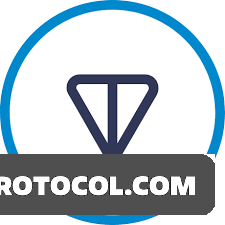
In this post, we provide an overview of the TON architecture and its technical aspects to equip you with the essential knowledge needed to decide whether the TON blockchain is what you are looking for.
What is TON?
TON (The Open Network) is a blockchain designed to facilitate fast transactions and help build a wide range of decentralized applications (dApps). This community-driven project was initiated by the creators and owners of Telegram.
TON_Blockchain
The network comprises several components, such as the TON Blockchain, TON DNS, TON Storage, and TON Sites.
TON DNS: Simplifies user interactions by assigning human-readable names to accounts and dApps.
TON Storage: Offers decentralized file storage, optimizing data retrieval and
TON Sites: Allows users to launch a web server with their website and make it available on the TON network.
TON Proxy: Enables connection to TON Sites.
TON Payments: Facilitates instant payments without the need to wait for block confirmation or pay transaction fees.
TON Space: Integrates with Telegram, providing a user-friendly environment with easy access to wallets within the messaging platform.
TON DHT: Functions as a decentralized storage system where each member of the network can store information about themselves or other data.
TON is not just a blockchain; it is an entire ecosystem comprising key players such as users, who possess assets; validators, who uphold the core consensus to ensure the blockchain’s integrity; and app developers, who build and develop services on the TON platform.
Telegram’s extensive user community, which has direct access to The Open Network, boosts its adoption potential.
TON design principles
The TON blockchain’s architecture is designed to provide a scalable platform for decentralized applications. By isolating contracts, supporting asynchronous operations, and using a sharded proof-of-stake consensus, TON ensures flexibility, scalability, security, and efficiency in working with decentralized apps.
TON operates as a ledger of state transitions. It records changes in the state of arbitrary accounts, each of which is a smart contract with its own storage and unique address. These accounts hold TON coin balances and program code, allowing developers to design the logic of smart contracts that are executed on the TON Virtual Machine (TVM).
The most important design principles of TON include:
Asynchronous operations
TON operates asynchronously, meaning a contract cannot immediately read another contract’s state. Instead, it sends a message and waits for a response. This design is similar to how independent computers on the internet communicate, maintaining their own data and state while sending and receiving messages asynchronously. It ensures that no single entity needs to see the entire global state of the blockchain at any time.
Flexibility and isolation
TON contracts offer great flexibility to developers, who can modify data, update contract code, send messages with coins and data to other contracts. Each contract is self-contained and isolated, preventing direct access to other contracts’ states, which allows the TON blockchain to scale infinitely. Contracts process incoming information, update their state, and send outgoing messages independently.
Guarantees and consensus
The TON blockchain ensures developers can verify the address of any message sender. Similarly, messages sent to an address come with cryptographic assurances regarding the receiving code. The network guarantees message delivery, although the time frame can vary across shards and blocks.
TON utilizes a proof-of-stake model to prevent double-spending and maintain consensus within the network. In this model, validators are chosen based on their stake, or the amount of cryptocurrency they hold. Validators are responsible for verifying transactions and are incentivized to act honestly because their stake is at risk of fines for fake verification. With many validators confirming each transaction, fraudulent actions are easy to detect and reject. This helps maintain the integrity of the TON network by deterring malicious actors from manipulating transactions.
Validators can be divided into groups to manage increased loads, allowing the system to scale horizontally. For example, one group might handle even account numbers, and another group might handle odd accounts.

